Pond Supplies for Building Water Gardens
Knowing what the job entails before you start is half the battle. Of course, Hoffman’s Water X Scapes is your one stop pond shop. We have all the pond supplies and knowledge you will need to help you become a successful water gardener from the very beginning.
Have a Plan
First, be prepared by knowing what type of flow you desire, how big you want your pond to be and how much you expect to spend on the project. These three variables may need to be flexible when making final decisions.
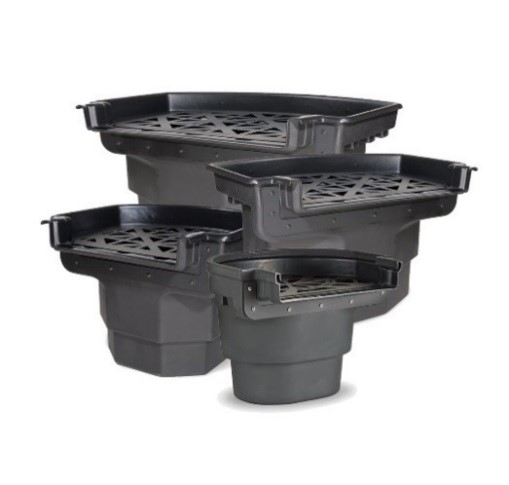
Waterfall Box (FilterFalls)
The filter box you choose will be the starting point of your waterfall - as well as where the majority of your biological filtration will take place (once the proper water treatments are applied of course).
Determine how wide you would like your waterfall to be, and choose a waterfall box with the spillway size to match. Atlantic’s FilterFalls are available in 16”, 19”, 26” and 38” spillway widths.

Pond Pump
Your pond pump is responsible for circulating and moving pond water through the filtration system – it also gives you that beautiful water flow over your stream and waterfall spillway.
The pump you choose should circulate the water volume at minimum 100% every hour for a small pond up to 600 gallons; and 50% every hour for larger ponds. Your desired waterfall flow, a heavy fish load, etc. may require more circulation than that. The more circulation, the more often the water is being filtered, provided all your components are sized properly.
Learn more about choosing a proper pump size with this handout from Atlantic Water Gardens.
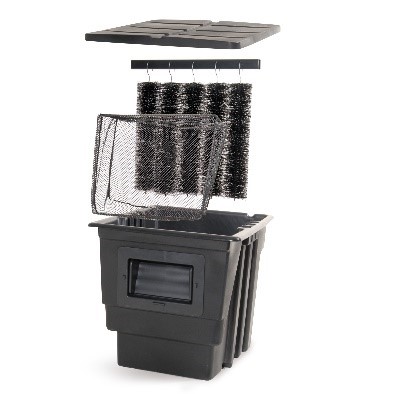
Skimmer Filter
A pond skimmer is the housing and pre-filter for your pump, as well as the mechanical filter for your pond. The pump draws pond water through an opening (weir) on the front of the skimmer box and traps suspended particles, from the water, and floating debris, on the surface, in the filter media housed inside the skimmer.
The size of the weir should be proportionate to the amount of water flow coming from your pond pump. A 6-inch opening will accommodate up to 4,000 gph; 9-inch up to 7,000 gph; and 14-inch up to 15,000 gph. (GPH = gallons per hour)
The skimmer box should be located as far opposite of the waterfall as possible. This encourages maximum circulation in the pond.
Rubber Pond Liner
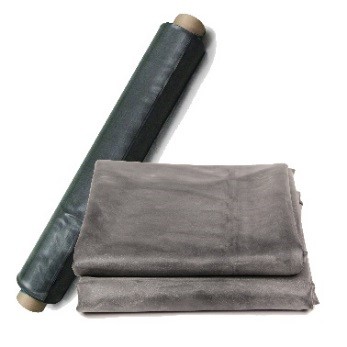
It is highly recommended that one solid piece of liner be used when building your pond. This will reduce the chances of having a leak at an over-lap or a seam.
Take your measurements, after the hole is dug, to ensure that the liner you purchase will fit properly. Measure your pond hole at the widest, longest and deepest points.
To determine your liner size, double the depth (D) and add it to your width (W); then double your depth and add it to your length (L). For example; if my pond measurements are 6’W x 8’L x 2’ D: 2x2=4 D; 4+6= 10; 4+8=12. The pond liner would be 10’ x 12’.
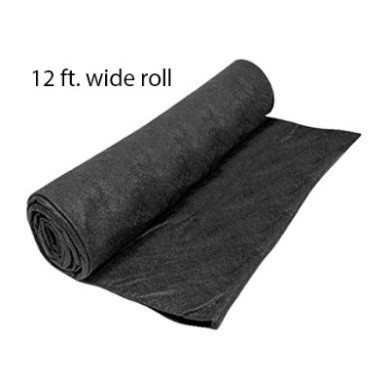
Underlayment
Underlayment is a non-woven fabric material, similar to felt. It has no bias, or cross-grain, which means that it does not stretch in any direction.
Its thick, durable construction helps prevent tree roots, rocks and other sharp objects from puncturing or cutting your pond liner from underneath – especially as weight and pressure of stone and water push from within. Pond underlayment is light weight and flexible making it easy to lay in the hole and form to the shape. It may be cut into pieces and over-lapped to get good protection and coverage under the pond liner.
 Hose
Hose
Plumbing that runs from your pond pump to the waterfall box is connected by hosing.
It should be sized by its inside diameter (ID) proportionately to the pump and desired outflow at the spillway. (Please read, “Finding the Right Hose for my Pond Pump”.) Measure the distance from the back of the skimmer box to the back of the waterfall spillway - taking the shortest path around the outside perimeter of the pond. This is where hosing will run just under the ground’s surface.
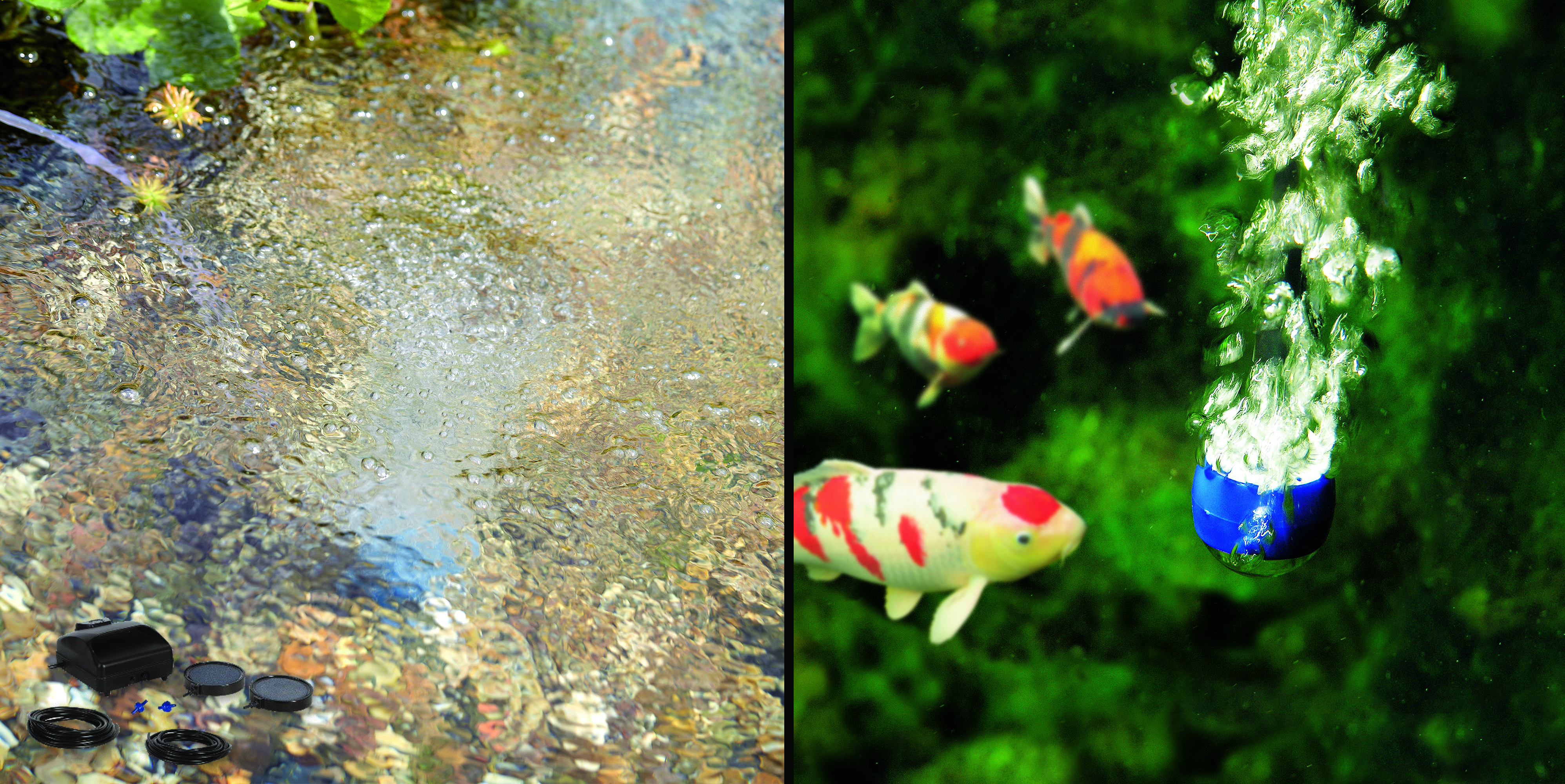
Aeration System
Your pond pump is for moving water (circulation), your aerator pump is for moving air into and throughout the pond water (aeration).
Dissolved oxygen in your pond water is important on so many levels. Pond fish need oxygen to survive. Beneficial bacteria needs oxygen to break down fish waste and other debris. The presence of dissolved oxygen in your pond will even help reduce foul odors.
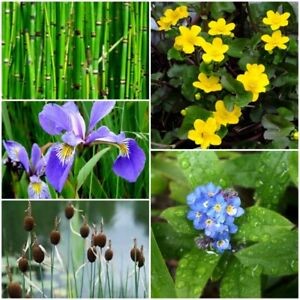 Aquatic Plants
Aquatic Plants
From submersible plants (seaweed), to marginals, to floating plants and water lilies; aquatic plants are a necessity to all ponds.
Plants in your pond will provide protection for fish, shade for cooling the water, a food source for fish and critters, and most importantly, an abundant amount of natural filtration.
Aquatic plants absorb converted fish waste in the water, essentially starving out algae. Not to mention, they are pretty to look at.
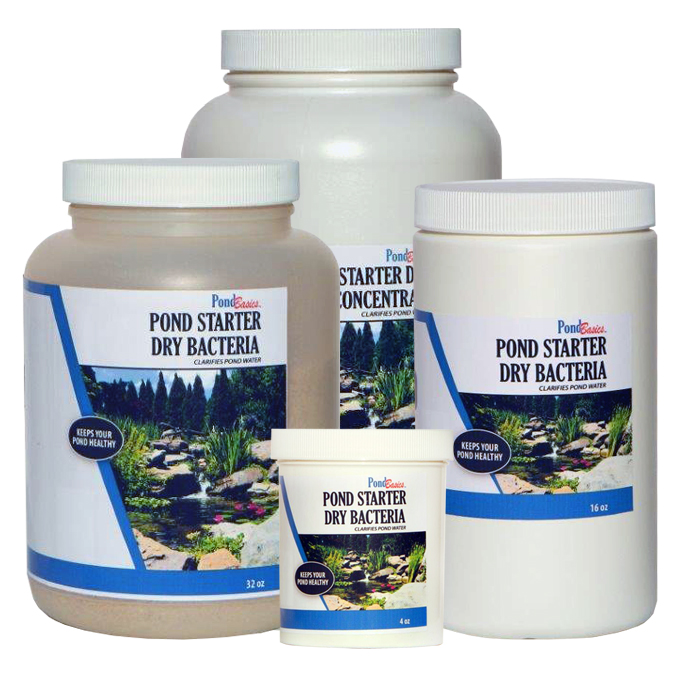 Beneficial Water Treatments
Beneficial Water Treatments
Natural pond water treatments, such as Pond Basics Pond Starter Dry Bacteria, when added to pond water regularly, will help establish your biological filter. Its job then, will be to collect and break down harmful fish waste and other debris, turning it into useful plant nutrients (nitrates).
Fish and Critters (optional)
 Last, but certainly not least, the habitat you have just created needs inhabitants. After all, aren’t they what you are doing this for?
Last, but certainly not least, the habitat you have just created needs inhabitants. After all, aren’t they what you are doing this for?
It is important to know your supplier so that you are sure you are getting healthy pets. Here at Hoffman’s Water X Scapes, we quarantine and treat our fish before we make them available for you to adopt – when necessary. This is to ensure that you are getting the healthiest tadpoles, goldfish, koi and other pond fish around. (Read our blog on “What Fish Can Live in a Garden Pond”) You will also be given a guide to assist you in acclimating your new pond fish when you get home - or you can read it here.
Check out our blog library to learn more about successfully building and maintaining a water garden. Hoffman's Water X Scapes has pond supplies online or available at our Uniontown, Ohio location.
